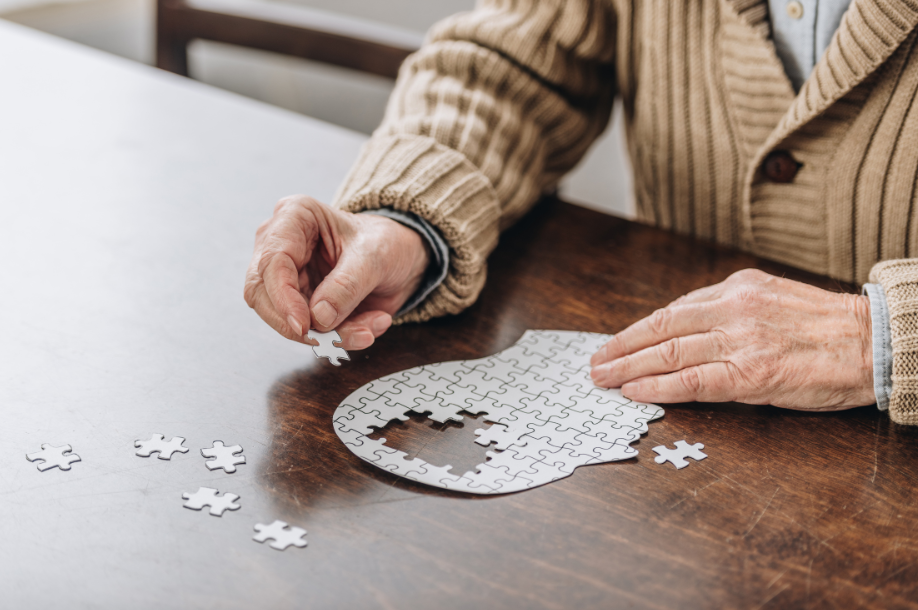Alzheimer’s Disease vs. Dementia: Understanding the Difference and How Home Care Helps
By Perfect Care Match · 7 min read · Memory Care & Aging

Cognitive decline is not a normal part of aging—but it is a central feature of dementia. Alzheimer’s disease (AD) is the most common form of dementia, accounting for 60–80% of cases. While diagnoses are important, managing daily life and quality of care often matters most.
Key Takeaways
-
Dementia Is a Syndrome, Not a Specific Disease
Dementia refers to a group of symptoms that impair memory, reasoning, and daily function. Alzheimer's is one type. -
Alzheimer’s Disease Is Progressive and Fatal
AD causes widespread brain damage, beginning years before symptoms appear, and gradually leads to complete loss of independence. -
Each Type of Dementia Has Distinct Patterns
The brain regions affected determine symptoms—AD usually begins with memory loss, while other types may affect behavior or movement first. -
Home Is the Least Disruptive Environment
Familiar surroundings help preserve orientation, reduce confusion, and support dignity throughout all stages of dementia. -
In-Home Care Eases the Burden for Families
Trained caregivers provide structure, safety, and emotional relief—ensuring that both clients and their loved ones feel supported.
What is Dementia?
According to the Alzheimer’s Association, “Dementia is a general term for loss of memory, language, problem-solving, and other thinking abilities that are severe enough to interfere with daily life.” It’s not a single condition, but a syndrome caused by a variety of diseases that affect the brain. It is progressive and irreversible, and it significantly impairs a person’s ability to perform everyday tasks such as bathing, cooking, and managing medications.
Alzheimer’s Disease: The Most Common Type
Alzheimer’s disease is a specific, degenerative brain disorder characterized by the build-up of abnormal proteins that damage brain cells. These proteins form plaques and tangles that interfere with neuron communication, leading to cell death. Over time, AD spreads throughout the brain, resulting in severe memory loss, language impairment, disorientation, and eventually, loss of physical function.
AD often develops slowly—sometimes beginning years or even decades before noticeable symptoms arise. This gradual onset means that families may miss early signs, attributing changes to normal aging. It’s not uncommon for occasional visitors to notice changes more quickly than those providing daily care.
While most people diagnosed are over age 65, early-onset Alzheimer’s can occur in individuals in their 40s or 50s. Regardless of age, AD is a terminal condition that requires increasing levels of support as it progresses.
How Alzheimer’s Differs from Other Types of Dementia
The umbrella of dementia includes multiple types:
Frontotemporal Dementia (FTD): Affects personality, behavior, and language earlier than memory.
Vascular Dementia: Often results from strokes or reduced blood flow to the brain, leading to more abrupt changes.
Lewy Body Dementia: May include hallucinations, motor symptoms, and sleep disturbances.
What sets AD apart is its hallmark pattern of memory loss followed by cognitive and eventually physical decline. In contrast, FTD may present first as personality shifts or poor judgment, and Lewy Body Dementia may show up with Parkinson-like movement issues.
Why Home is the Best Setting for Dementia Care
Staying at home helps preserve a person’s sense of self. The layout, smell, and sounds of a familiar environment offer grounding comfort to someone losing their memory. Transitions to institutional settings often accelerate confusion, lead to sleep disturbances, and may trigger distressing behaviors like pacing, aggression, or wandering.
Facilities often lack the staffing levels to provide consistent one-on-one care, increasing the likelihood of missed needs, emotional neglect, and overuse of psychotropic medications to manage behaviors.
How In-Home Care Supports Dementia Clients and Families
Routine and Familiarity: Trained caregivers follow personalized routines that reduce agitation and improve mood.
Nutrition and Hygiene Oversight: Caregivers help maintain daily hygiene, encourage fluid intake, prepare nutritious meals, and monitor appetite or weight changes.
Fall and Injury Prevention: Supervision reduces the risk of injury from wandering, poor balance, or unsafe mobility.
Companionship and Connection: Caregivers provide conversation, music, reminiscence, and meaningful engagement that supports mental health.
Family Peace of Mind: Loved ones receive updates, observe improvements, and feel confident that their parent is safe, supported, and seen.
Preserving Dignity Through Care
Alzheimer’s and other forms of dementia are heartbreaking, but with compassionate support, individuals can still experience comfort, joy, and human connection. In-home care promotes dignity, preserves routines, and enables families to focus on moments of presence and love—not just loss.
